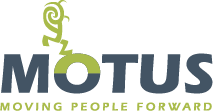Historically, the conversation around diversity has often begun with identifying a group of individuals by race, ethnicity, and gender, but slowly, as more diverse groups are finding their voices, the term has extended to include those with disabilities, different sexual orientations, ages, religions, and the list is quickly growing. The definition of diversity can be debated and expanded indefinitely, however, when the conversation begins with a definition it can be easy to overlook the heart of the matter. The truth is that the labels and identifications aren’t nearly as important as the minds behind them. The purpose of defining diversity is to take the concept of diverse groups and turn it into the inclusion of diverse minds.
Being the “melting pot” of the world, our nation has the unique displeasure of being conceived in racial and religious tension—diversity issues are written into the fabric of our history. We cannot escape topics such as slavery, discrimination, or religious freedom, because our country was founded in them. The question is not, “will we struggle with diversity in this nation?” but rather, “when we struggle with diversity, what are we going to do?” Diversity calls for action, and historically we have not always taken it. In 1774, two years before the declaration of independence was signed, John Adams received a letter from Samuel Johnson, a writer, and poet from London. Johnson challenged the American fight for freedom and independence by asking how those who sought freedom from Great Britain could accuse the King of injustice while they simultaneously denied freedom to those they enslaved from other nations. Simply stated, according to Samuel Johnson, the colonies’ position was not only hypocritical but somewhat pathological. Though these men called for freedom, they did not practice it. Even John Adams, who was adamantly opposed to the institution of slavery and felt that it diminished the fabric of the men who were destined to establish a new nation, did nothing to stop it. The essence of this story’s relevance is as follows: Identifying a problem and believing there is a problem is not enough. Diversity calls for action, it calls for inclusion, otherwise, the conversation is hypocrisy.
Many who are reluctant to practice inclusion are either fearful of its outcomes or uncertain of its benefits. In order to relieve these fears, it is important to not only view diversity as a set of predefined classifications but to understand inclusion has its most impactful work outlined in the framework of thought diversity. This kind of forward thinking and the principles behind it drove men like Andrew Carnegie, Harvey Firestone, Henry Ford, and John D. Rockefeller to become some of this nation’s most successful entrepreneurs. The principle of minds working together in harmony to achieve a goal, not as multiple individual minds, but as one primary mastermind, moved these men to inclusive action. They saw that no single group had a monopoly on creative and innovative thought. This principle of harmonious minds can only be amplified when the minds included are from diverse backgrounds. When diverse minds come together to offer experience and knowledge from more than one perspective, it enhances the success of the organizations in which they work, the communities in which they live, and the relationships in which they participate.
The time has come to take action. Diversity is not just a set of criteria to be categorized, measured and documented, it is the coming together of minds, ideas, and people for the advancement of all. Extending these principles into business plans, hiring tactics, and corporate values is not only beneficial but inevitably vital. The trajectory that this country is on is one of inclusion, and those who do not take the time to educate themselves on these values and take action will be left behind. Where do you stand? Where does your company stand? Join the discussion of diversity and the implementation of inclusion today.


